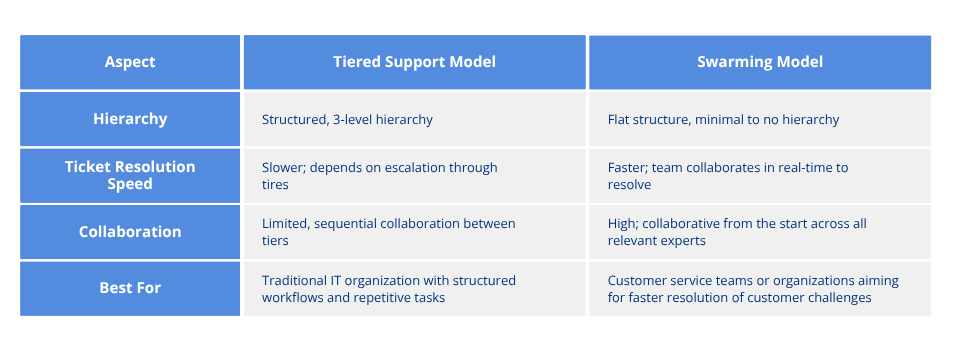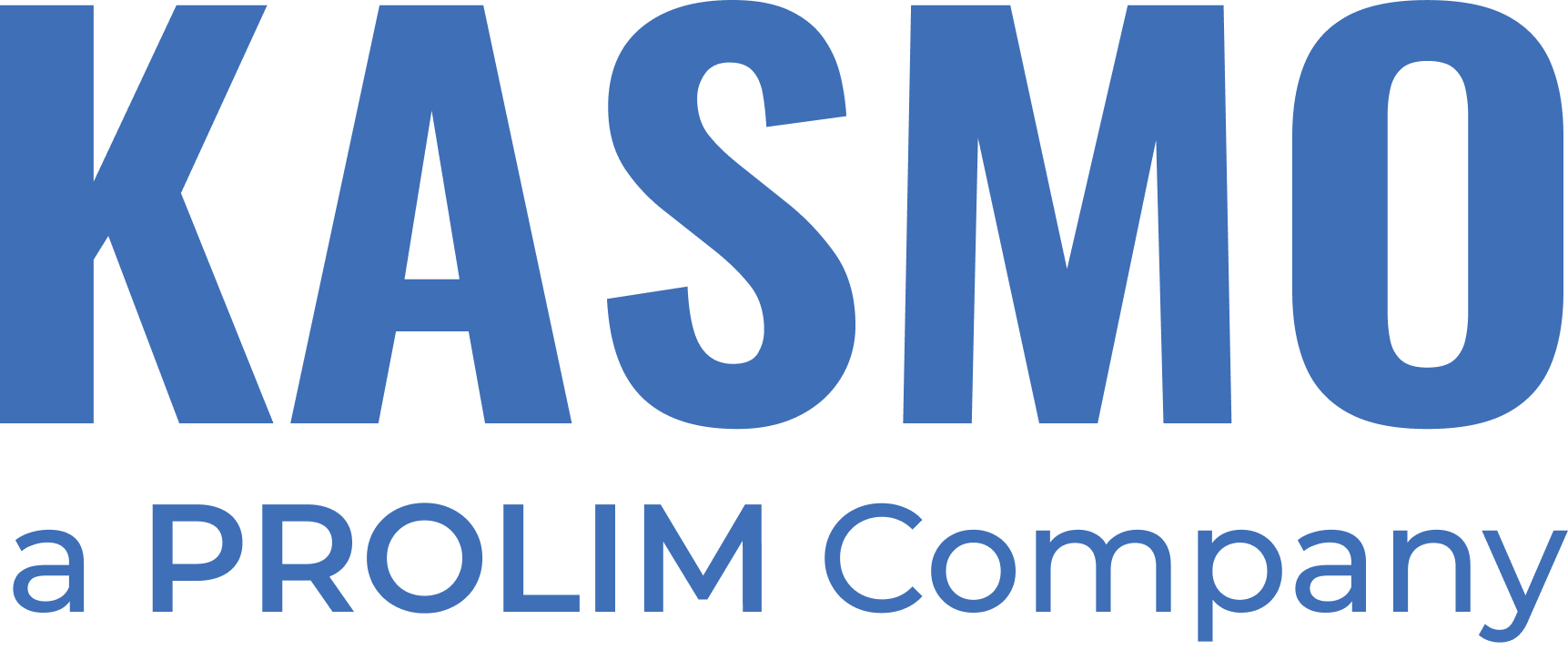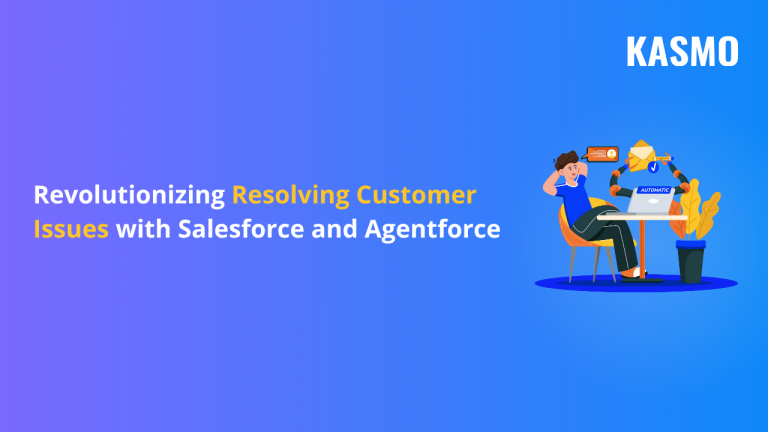Why Resolving Customer Issues Is Not a Challenge Anymore for Service Teams?
A Salesforce survey report shows – “Eighty-five percent of decision makers say service is expected to contribute a larger share of revenue this year.” With customer service now more important than ever, resolving customer issues need not be challenging anymore. Conflict resolution in customer service can be now faster with service swarming.
Instead of escalating every complex customer service, service agents can resolve customer problems by collaborating effectively with experts and customers at the same time. As 83% of customers expect to solve their challenges by speaking with only one customer service personnel, swarming becomes an effective and faster way for resolving customer issues.
With Salesforce Service Cloud and Agentforce, problem solving in customer service can get better and increase the productivity and efficiency of your service teams. Reduce customer churn, enhance retention and build customer loyalty by integrating service swarming models with Salesforce and Kasmo’s Salesforce expertise.
What is Swarming?
Swarming is a modern, collaborative approach to faster resolution of customer service issues. Instead of going through the tedious and lengthy process of passing a customer issue from one support level to another, or from one expert group to another, swarming brings together the right experts from various functions to work on the problem immediately.
In the swarming model, the first support agent remains the primary point of contact for customers, while a dynamic team collaborates behind the scenes in real time. This approach ensures customer service teams resolve issues faster, minimizing handoffs of customers from one team to the other, and improving both agent learning and customer satisfaction.
Swarming models are created keeping in mind that customers will be at the center, instead solely focusing on maximizing revenue. By eliminating rigid support tiers, companies can deliver quicker, more accurate responses while fostering a culture of collaboration and accountability. Businesses implementing service swarming are successful in providing swift customer service. Their customers experience consistent, informed support from a unified team throughout their journey. As a result, swarming is increasingly being adopted as proactive, responsive, and intelligent customer service.
Difference Between Tiered Support VS Swarming
To understand why intelligent swarming is a better choice that using tiered support for resolving customer issues, let’s understand the major differences between them:

How Can Service Teams Get Better at Resolving Customer Issues with Swarming?
Companies with customer service problems can greatly benefit from intelligent swarming. It is a different support model that empowers service teams to resolve issues faster, collaborate more effectively, and improve customer service continuously. Unlike the traditional tiered support model, which relies on escalation, swarming brings the right people together from the beginning, allowing companies to provide faster and smarter ways to solve customer service problems. Here’s how service teams can get better at resolving customer issues using the swarming approach:
Immediate and Faster Collaboration with Teams
In a swarming model, the first customer service representative that gets in touch with the customers is the main point of contact between the customer and other teams. That representative then takes the issues faced by the customer to the larger team, which eliminates the lag caused by repeated escalations and multiple handoffs.
With intelligent swarming, companies can eliminate the process of multiple ticket generation. Instead, the service and other related teams can swarm around the issue immediately, pulling in relevant subject matter experts on a single platform. This drastically reduces resolution time, especially for complex or cross-functional customer service problems.
Breaks Down Data Silos
Resolving customer issues faster with service swarming is easy. As in this model, multiple teams are required to share data with each other and work collaboratively. It reduces data silos and prevents the data from getting fragmented. With continuous data sharing, teams are always informed on customer issues and engagements.
Swarming encourages horizontal collaboration across teams, which brings in experts from development, product, and even marketing teams. This cross-functional collaboration empowers teams to visualize problems from multiple angles at the same time, leading to quicker root cause analysis and creating more holistic solutions for customers. Additionally, this builds stronger inter-team relationships and increases employee engagement.
Continuous Learning
Another benefit of intelligent swarming is how it fosters peer learning. When working with more seasoned experts, junior employees are more motivated to participate in resolving customer issues in real-time. They learn numerous skills including troubleshooting, gaining domain-specific knowledge, enhancing communication with customers, and building inter-departmental relationships. Additionally, swarming dynamically substitutes rigid knowledge bases with real-time and optimized resources. This minimizes reliance on static and outdated knowledge resources.
By leveraging how service teams respond to different types of issues, who participates most often, and what solutions are most effective, organizations can identify skill gaps, refine customer service strategies, and even proactively address issues before they occur. Leveraging Salesforce CRM, with its customizable and scalable dashboards, organizations can continuously improve their teams and customer service strategies.
Improves Employee Productivity
Traditional escalation models can frustrate both agents and customers. Agents spend less time writing detailed escalation notes and more on resolving customer issues, improving transparency between the business and the customers. Swarming reduces operational workloads as all the data is stored in one place, eliminating manual errors. Agents feel more supported, and customers receive timely and effective case resolutions. With better employee accountability and a sense of ownership, companies can boost morale and improve productivity.
Builds Shared Communication Channels
Companies need to establish a culture where collaboration is prioritized over hierarchy to make problem solving in customer service easy and effective. This involves business creating shared channels for instantaneous interaction (such as Slack or MS Teams), assigning distinct responsibilities to customer service representatives, and allowing teams to take new initiatives to resolve customer issues. Leaders need to focus on celebrating collective and cumulative team achievements and not just individual accomplishments.
Benefits Achieved by Customers with Swarming
Swarming doesn’t just transform how service teams work; it also completely redefines the customer experience. By eliminating handoffs, embracing real-time collaboration, and prioritizing fast, accurate case resolutions, swarming delivers a level of support to customers that is accurate and personalized. Here’s how customers directly benefit from the swarming model:
Faster, More Accurate Resolutions
A normal support model typically creates delays due to escalations, consistencies in context sharing, and multiple-touch points. With intelligent swarming, businesses can bring in the right experts from the start. Companies leveraging Salesforce CRM get a consolidated knowledge base, helping them resolve issues faster, which reduces the wait time for customers, follow up appointments, and creates a less frustrating experience for their customers.
Seamless and Personalized Support
Customers often get frustrated when they’re bounced between departments, or they have to re-explain their issues multiple times to different representatives. Swarming changes this entirely. Customers need to only interact with the single point of contact (a customer service agent) who was present when the customer escalated their issues to the business. The customer service agent then collaborates with different members or teams required to solve this challenge. This makes the customer experience more consistent and personal.
Higher Confidence and Loyalty
Support interactions are a defining moment in a customer’s journey. When issues are resolved efficiently and empathetically, customers walk away with more than just a fix; they gain confidence in the brand. Leveraging service swarming, businesses can provide customers with the best experience. A customer who sees that their issue is handled with urgency, care, and seamless collaboration, is far more likely to stay loyal and become a brand advocate.
Empowerment Through Transparency and Shared Knowledge
Service swarming keeps the customer in the loop at all times. They get real-time updates regarding their challenges, and they remain informed on how far their issue is yet to be resolved. Here, the customer also learns more about the issue and how to address similar challenges in the future on their own or which team to reach out to. This educational aspect not only builds trust but also empowers customers to become more self-sufficient and confident in using the product or service.
Reduced Escalation Anxiety
In a tiered model, customers often worry when their issue is escalated, like – “How long will it take to find a solution?” “Will someone new take over?” “Do I need to explain everything again?” – service swarming removes this uncertainty. Even complex issues are resolved through streamlined collaboration behind the scenes, without the customer having to reiterate the issue. This reassures customers that they will get the best solution every step of the way.
A Human-Centric Experience
Intelligent swarming fosters empathy. Because the support agent remains engaged and supported by multiple team members, their tone, communication, and problem-solving are often more thoughtful and customer focused. With this kind of humane interaction, the customer feels more valued and not just another ticket to resolve, creating a better customer-brand relationship.
How Businesses Can Enhance the Power of Swarming with Salesforce
Customer expectations are higher than ever, and businesses can’t afford delays, data silos, or inefficiencies in customer service. By uniting cross-functional expertise at the very beginning, service swarming breaks away from the traditional tiered escalation model. Now resolving customer issues is becoming faster and more accurate.
With Salesforce Service Cloud, Slack, and Agentforce, businesses have the perfect platform to implement, scale, and reconfigure their swarming models. Here’s how companies can harness Salesforce to elevate their customer service:
Swift Action on Challenges Faced by Customers
Salesforce allows agents to initiate conversations and groups directly from a case (customer issues) using quick actions. For instance, when an agent hits a dead-end with a complex technical issue, they can launch a “Swarm Flow” that intelligently pulls in the right subject matter experts (SMEs) using skills-based routing, past resolution data, and team availability. This not only reduces time to resolution but also ensures that every case gets expert attention right from the beginning.
Collaborate in Real Time Using Slack
By integrating Slack, businesses enable dynamic, real-time collaboration between teams on a single platform. Agents and experts can chat, share files, tag relevant teammates, and even use video calls to resolve customer challenges. This eliminates communication challenges, allows faster knowledge transfer, and provides an intuitive, centralized platform for case resolution.
Empower Field Teams
Swarming isn’t limited to customer support teams. Using Salesforce Field Service, technicians can take part in cross-team conversations. Whether they need help diagnosing a hardware issue or require support from product engineers, field agents can tap into the centralized knowledge base and communicate with different members of the team in near-real time. By integrating Salesforce, businesses can ensure consistency and quality of service across every touchpoint, while reducing resolution times.
Enable Smarter Decision-Making with Agentforce
With Salesforce Agentforce, businesses can leverage AI and automation to match the right experts to the right case faster. This reduces the manual effort of looking for help and ensures that every customer receives solutions tailored to their challenges. This drives faster and more accurate problem-solving.
Unifies Knowledge
Every customer interaction in Salesforce gets automatically documented. This helps businesses train their human workforce and AI Agents to solve similar cases in the future. Businesses can even attach knowledge article drafts directly from Slack, which makes it easy for employees and stakeholders to access the knowledge easily. By continuously expanding their internal knowledge base while reducing the learning curve for new agents, businesses can ensure they are improving their customer service regularly.
Gain 360-Degree Visibility
Salesforce enables business leaders to track the performance and efficiency of their employees through built-in and customized reports and dashboards. These dashboards enable leaders to analyze which teams are resolving customer issues faster, measure employee productivity, and customer satisfaction. With Salesforce now businesses can refine processes, train teams, and identify common pain points easily.
Conclusion
Salesforce doesn’t just support intelligent swarming; it enhances and empowers businesses to enhance customer loyalty by providing them with swift actions. Resolving customer issues doesn’t have to be a long, drawn-out process; it can be faster, shorter, and personalized. Now enable collaboration and foster cross-team collaboration for better problem-solving in customer service. Since 79% of businesses use messenger apps and other mobile devices to solve customer service problems, businesses that adopt intelligent swarming with Salesforce will remain at the forefront and transform customer support into a strategic advantage.



